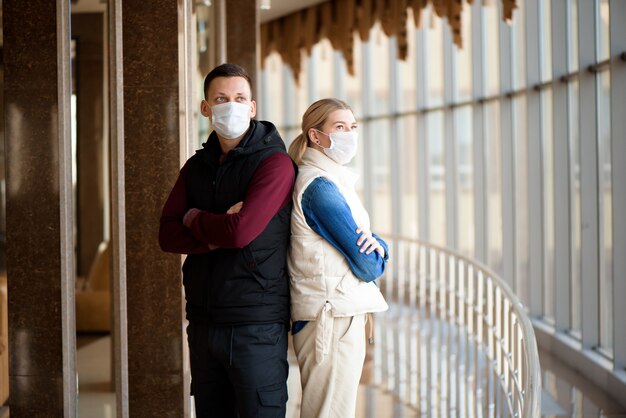Understanding Tuberculosis: How Common Is It?
Imagine a disease that has haunted humanity for centuries, one that continues to impact millions of lives across the globe. Tuberculosis (TB) is exactly that—a persistent public health challenge that, despite advancements, remains robustly embedded in modern society. Its sheer prevalence might surprise you, especially considering how often it flies under the radar in discussions about health priorities. So, how common is tuberculosis in today's world?
Tuberculosis: A Global Overview
Tuberculosis is not only a disease of the past; it’s a present-day reality for millions. Each year, countries report new cases despite global efforts to mitigate its spread. In terms of numbers, the World Health Organization estimates that around 10 million people fall ill with TB each year worldwide. These numbers paint a picture of a disease that knows no boundaries, affecting people of all ages, races, and economic backgrounds.
Higher Risk Regions
TB's prevalence is not evenly distributed around the globe. It tends to cluster in areas with certain socioeconomic factors that contribute to its spread. While it is a global concern, TB is much more common in specific regions, particularly Sub-Saharan Africa, Southeast Asia, and the Western Pacific. In these areas, the disease is almost endemic. Lack of access to healthcare, crowded living conditions, and high rates of HIV infection are significant factors that fuel the spread in these regions.
Developed vs. Developing Nations
In high-income countries, TB is rare. However, instances do happen, particularly among populations such as immigrants from high-incidence countries, people who are homeless, or those with compromised immune systems. In contrast, developing nations struggle with larger TB caseloads due to limited resources, making them heavily reliant on international aid and interventions to manage and reduce TB cases.
The Disease’s Impact and Challenges
TB’s Health Consequences
TB primarily affects the lungs but can spread to other parts of the body, leading to a variety of symptoms including coughing, chest pain, fever, and weight loss. Left untreated, it can be fatal. However, the disease is curable and preventable with proper medical care. The challenge lies in diagnosing it early, as symptoms can be mild for months, delaying healthcare-seeking behavior.
Multidrug-Resistant TB
A growing concern in the arena of infectious diseases is multidrug-resistant TB (MDR-TB). This form doesn’t respond to the standard treatment drugs, making it more difficult, and sometimes more expensive, to treat. MDR-TB often results from incomplete or inconsistent treatment, emphasizing the importance of adherence to prescribed medication regimens.
Socio-Economic Impacts
Tuberculosis doesn’t just impact the human body; it significantly affects economies and social systems. The disease often affects individuals in their most productive years, adversely impacting families’ economic stability.
Economic Consequences
- Economic Burden: TB sickness can lead to long absences from work, resulting in loss of income for individuals and families.
- Healthcare Costs: The cost of treatment, especially for MDR-TB, can be prohibitive for both individuals and government healthcare systems in resource-limited settings.
Social Stigma
In many societies, TB carries a social stigma that can prevent individuals from seeking timely diagnosis and treatment. The fear of being ostracized can result in the unintentional spread of the disease as people avoid public health facilities.
Effective TB Control and Prevention Strategies
Despite the hurdles, there are effective strategies to control and eventually eliminate TB. These involve a mix of medical, social, and policy approaches that build toward a cumulative effect in reducing TB prevalence.
Public Health Strategies
- Vaccination: The BCG vaccine is currently used in many countries to provide partial protection especially for children against severe forms of TB.
- Screening and Testing: Routine TB screening in high-risk populations can help in early identification and prompt treatment.
Treatment Programs
- Directly Observed Treatment, Short-Course (DOTS) is a critical component, ensuring that TB patients adhere to their medication schedule.
- Support for patients, encouragement, and follow-ups help prevent the development of MDR-TB.
Policy and Research Initiatives
Long-term success against TB requires robust policies and research investments:
- Research for New Vaccines and Drugs: Continued scientific research is essential in finding more effective treatment regimens and potentially completely eradicative vaccines.
- Policy Development: Strengthening healthcare systems and implementing policies that ensure comprehensive access to care are paramount.
Practical Tips on TB Awareness
Understanding TB is the first step toward preventing it. Here are five practical tips to enhance awareness and promote healthy practices:
Personal Measures
- Stay Educated: Learn about TB symptoms and when to seek a medical consultation.
- Promote Good Hygiene: Encourage practices such as covering mouths when coughing or sneezing.
Community Involvement
- Community Support: Engage in local TB awareness events to remove stigma.
- Encourage Health Screenings: Early detection through regular health check-ups is key.
Advocacy
- Support Policy Initiatives: Advocate for improved TB prevention policies and support for global health initiatives that aim to reduce TB prevalence.
Our journey through understanding TB reveals the complexities and ongoing challenges in managing this disease. Its prevalence underscores the necessity for continuous global cooperation and innovation in health strategies. Armed with knowledge and proactive measures, we can effectively contribute to reducing the burden of tuberculosis on individuals and communities worldwide.
Quick Takeaways on Tuberculosis 🌍
- 10 Million: Approximate global TB cases annually.
- High-Risk Areas: Sub-Saharan Africa, Southeast Asia, and Western Pacific are most affected.
- MDR-TB Risk: Incomplete treatments increase the risk of drug-resistant TB.
- Social Impact: Economic burden and social stigma are significant challenges.
- Prevention and Control: Vaccination, DOTS, routine screenings, and policy support are crucial for control.
By understanding and sharing these insights, we can empower individuals and communities to combat one of the world's oldest yet persistent health challenges. 🛡️
